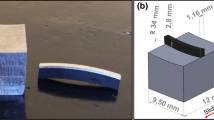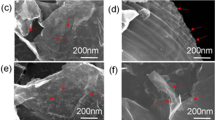Abstract
Anti-wear additives are important components of the lubricating oils which protect the sliding surfaces from wear. Researches on developing the non-phosphorus catalysis-friendly anti-wear additive still continue due to government’s regulations. One way to provide non-phosphorus anti-wear additive is boron and sulfur addition to succinimides. In this study, boron succinimide used as an anti-wear additive is compared with ZDDPs in a real engine environment by the engine bench tests. Anti-wear performances were evaluated by microscopic and spectroscopic surface analyses on engine cylinder liner and piston rings after 100-h engine running periods for each anti-wear additive. SEM/EDX and XPS analyses were used to evaluate the tribochemical analyses of tribofilms. SEM and AFM were used to evaluate wear mechanisms on cylinder liner and piston ring surfaces. Results showed that boron succinimide can be an alternative anti-wear additive of ZDDPs from the perspective of anti-wear efficiency.

















Similar content being viewed by others
Abbreviations
- ACEA:
-
European Automobile Manufacturers Association
- AFM:
-
Atomic force microscopy
- API:
-
American Petroleum Institute
- BE:
-
Binding energy
- BDC:
-
Bottom dead center
- BN:
-
Boron nitride
- CDI:
-
Capacitor discharge ignition
- DC:
-
Direct current
- EDX:
-
Energy-dispersive X-ray
- ISO:
-
International organization for standardization
- MC:
-
Middle center
- OHV:
-
Overhead valve
- PAO:
-
Poly-alpha-olefin
- PPP-CONT:
-
Point Probe Plus Contact
- SEM:
-
Scanning electron microscopy
- Si3N4:
-
Silicon nitride
- TDC:
-
Top dead center
- XPS:
-
X-ray photoelectron spectroscopy
- ZDDPs:
-
Zinc dialkyldithiophosphates
- \(\vartheta\) :
-
Viscosity Centistokes (cSt)
- eV:
-
Anode energy electron volts
- h :
-
Height millimeter (mm)
- k :
-
Nominal spring constant Newton/meter (N/m)
- l :
-
Length millimeter (mm)
- N :
-
Engine speed rotation per minute (rpm)
- P :
-
Power kilo watt (kW)
- RaL:
-
Cylinder liner average roughness nanometer (nm)
- RaR:
-
Piston ring average roughness nanometer (nm)
- w :
-
Width millimeter (mm)
References
Bhushan B (2001) Diesel engine tribology, modern tribology handbook, vol 1. CRC Press, Boca Raton, pp 1233–1246
Dresel W, Mang T (2007) Lubricants and lubrication. Wiley, Weinheim, pp 108–109
Barnes AM, Bartle KD, Thibon VRA (2001) A review of zinc dialkyldithiophosphates (ZDDPs): characterisation and role in the lubricating oil. Tribol Int 34:389–395
Mortier RM, Fox MF, Orszulik ST (2010) Chemistry and technology of lubricants, 3rd edn. Springer, Berlin
Spikes H (2004) History and mechanisms of ZDDP. Tribol Lett 17(3):469–489
Pereira G, Lachenwitzer A, Nicholls MA, Kasrai M, Norton PR, Stasio GD (2005) Chemical characterization and nanomechanical properties of antiwear films fabricated from ZDDP on a near hypereutectic Al–Si alloy. Tribol Lett 18(4):411–414
Schneider A, Brenner J, Tomastik C, Franek F (2010) Capacity of selected ionic liquids as alternative EP/AW additive. Lubr Sci 22:215–223
Yan L, Yue W, Wang C, Wei D, Xu B (2012) Comparing tribological behaviors of sulfur- and phosphorus-free organomolybdenum additive with ZDDP and MoDTC. Tribol Int 53:150–158
Minami I, Murakami H, Nanao H, Mori S (2006) Additive effect for environmental lubricants-decreased phosphorus contents in low viscosity base oils for antiwear performance. J Jpn Pet Inst 49:268–273
Wilkins AJJ, Hannington NA (1990) The effect of fuel and oil additives on automobile catalyst performance. Platin Met 34:16–24
Katafuchi T, Shimizu N (2007) Evaluation of the antiwear and friction reduction characteristics of mercaptocarboxylate derivatives as novel phosphorous-free additives. Tribol Int 40:1017–1024
http://www.oilspecifications.org. Accessed 12 May 2016
Service Fill Oils For Gasoline Engines Light Duty Diesel Engines (2012) Engines with aftertreatment devices and heavy duty diesel engines. ACEA European Oil Sequences, Bruxelles
Inoue K, Kurahashi T, Negishi T, Akiyama K, Arimura K, Tasaka K (1992) Effects of phosphorus and ash contents of engines on deactivation of monolithic three-way catalysts and oxygen sensors, SAE 920654
Mortier RM, Fox MF, Orszulik ST (2010) Chemistry and technology of lubricants, 3rd edn. Springer, New York, pp 100–110
Pawlak Z (2003) Tribochemistry of lubrication oils. Tribology and interface engineering series, no. 45. Elsevier, Amsterdam
Barros MID, Bouchet J, Raoult I, Mogne TL, Martin JM, Kasrai M, Yamada Y (2003) Friction reduction by metal sulfides in boundary lubrication studied by XPS and XANES analyses. Wear 254:863–887
Stepina V, Vesely V (1992) Lubricants and special fluids, tribology series. Elsevier, Slovakia, pp 318–325
Gosvami NN, Bares JA, Mangolini F, Konicek AR, Yablon DG, Carpick RW (2015) Mechanisms of antiwear tribofilm growth revealed in situ by single-asperity sliding contacts. Science 348:102–106
Shah UF, Glavatskih S, Antzutkin ON (2013) Boron in tribology: from borates to ionic liquids. Tribol Lett 51:281–301
Junbin Y (1997) Antiwear function and mechanism of borate containing nitrogen. Tribol Int 30:387–389
Barrell DJW, Priest M, Taylor CM (2004) Experimental simulation of impact and sliding wear in the top piston ring groove of a gasoline engine. J Eng Tribol 218:173–183
Varlot K, Martin JM, Grossiord C, Vargiolu R, Vacher B, Inoue K (1999) A dual-analyses approach in tribochemistry: application to ZDDP/calcium borate additive interactions. Tribol Lett 6:181–189
Unnikrishnan R, Jain MC, Harinarayan AK, Mehta AK (2002) Additive–additive interaction: a XPS study of the effect of ZDDP on the AW/EP characteristics of molybdenum based additives. Wear 252:240–249
Hokkiriwaga K, Kato K (1988) The effects of hardness on the transition of the abrasive wear mechanism of steels. Wear 123:241–251
Komvopoulos K, Do V, Yamaguchi ES, Yeh SW, Ryason PR (2004) X-ray photoelectron spectroscopy analyses of antiwear tribofilms produced on boundary-lubricated steel surfaces from sulfur- and phosphorus-containing additives and metal deactivator additive. Tribol Trans 47:321–327
Martin JM, LeMogne Th, Chassagnette C, Grades MN (1992) Friction of hexagonal boron nitride in various environments. Tribol Trans 35:462–472
Ladaviere R, Martin JM, LeMogne Th, Vacher B, Constans B, Iovine S (2003) Tribochemistry: friction-induced lamellar solids from lubricant additives. Tribol Res Des Eng Syst Tribol Ser 41:15–22
Pawlak Z, Kaldonski T, Paid R, Bayraktar E, Oloyede E (2009) A comparative study on the tribological behaviour of hexagonal boron nitride (h-BN) as lubricating micro-particles: an additive in porous sliding bearings for a car clutch. Wear 267:1198–1202
Ali SHR, Mohamed HH, Bedewy MK (2009) Int J Precis Eng Manuf 10:19
Rosen BG, Ohlsson R, Thomas TR (1996) Wear of cylinder bore microtopography. Wear 198:271–279
Srivastava DK, Agarwal AK, Kumar J (2007) Effect of liner surface properties on wear and friction in a non-firing engine simulator. Mater Des 28:1632–1640
Yablon DG, Kalamaras PH, Deckman DE, Webster MN (2006) Atomic force microscopy and raman spectroscopy investigation of additive interactions responsible for anti-wear film formation in a lubricated contact. Tribol Trans 49:108–116
Konicek AR, Jacobs PW, Webster MN, Schilowitz AM (2016) Role of tribofilms in wear protection. Tribol Int 94:14–19
Kimura Y, Wakabayashi T, Okada K, Wada T, Nishikawa H (1999) Boron nitride as a lubricant additive. Wear 232:199–206
Sargent LB Jr (1978) On the fundamental nature of metal–metal adhesion. SLE Trans 21(4):285–290
Arakawa K (2015) Effects of wear on contact area and dynamic sliding velocity. Wear 328:552–555
Acknowledgements
The authors would like to thank the Dr. Hirosi Fujita for their oil support in this work from Idemitsu Kosan Co. Ltd. petrochemical company in Japan, Dr. Oğuzhan GÜRLÜ from Istanbul Technical University for AFM supports and Dr. Barış YAĞCI from Koç University Surface Science and Technology Centre for chemical analyses.
Author information
Authors and Affiliations
Corresponding author
Additional information
Technical Editor: Jose A. dos Reis Parise.
Rights and permissions
About this article
Cite this article
Özkan, D., Sulukan, E. The anti-wear efficiency of boron succinimide on engine cylinder liner and piston ring surfaces. J Braz. Soc. Mech. Sci. Eng. 40, 32 (2018). https://doi.org/10.1007/s40430-018-1014-y
Received:
Accepted:
Published:
DOI: https://doi.org/10.1007/s40430-018-1014-y




